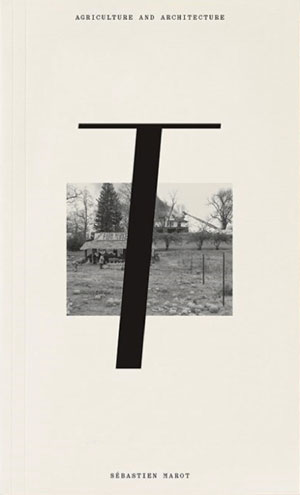
Become natives
Redefining the limits of the relationship between architecture and agriculture undoubtedly holds a fundamental position between the emerging themes within the contemporary architectural and urban planning debate. As proof of this, this topic is the protagonist of two important exhibitions held between 2019 and 2020. The first, entitled Architecture and Agriculture: Taking the Country's Side, took place from October 5th to 2th December at Garagem Sul within of the Lisbon Architecture Triennale and was curated by Sébastien Marot. The second, instead, is the highly-anticipated and much-debated Countryside, The Future curated by Rem Koolhaas and AMO, which opened in February 2020 at the Guggenheim Museum in New York. Given the difficult environmental situation that the world is facing - climate change, oil peak, exhaustion of minerals and metals, soil erosion, freshwater scarcity, biodiversity collapse, etc. - both exhibitions share a common belief. If architecture has to play a role in addressing these issues, it will be necessary to focus on the countryside. Koolhaas' exhibition presents itself as a sampling of phenomena on a global scale, mostly contemporary, which would presumably provide some of the solutions to the enigma of a future that abandons cities to prepare new mutations. Marot's exhibition, on the other end, in an almost educational key, brings together ideas that allow us to appreciate the dynamics of the transformations brought about by the relationship between agriculture and architecture. Taking the Country's Side. Architecture and Agriculture, is one of the five volumes which are as catalogs for the fifth edition of the Lisbon Architecture Triennale. It is a kind of travel journal that collects the experiences of the exhibition exploring the complex relationship between architecture and agriculture. The first part of the title is an invitation and an incentive for architects, and not only, to effectively side with the Countryside, to become natives. To learn from those who committed themselves to building and managing the Mundus, such as the well-known personalities in the fields of environmentalism, social ecology, permaculture, agroecology and bioregionalism, widely referred to in the book. The author is particularly careful to recall how intimately the history of the city is linked to that of the productive territories; it is a co-evolution that took place during the Neolithic Revolution or first Agricultural Revolution. Marot, like many others, however, assumes that Agriculture and Architecture are twin practices and disciplines, whose split occurs mainly with the rural exodus caused by the Industrial Revolution, only two centuries ago. Therefore, the idea is to retrace their parallel histories in order to provide the means to examine possible future scenarios given by this relationship. The planning strategy proposed within the book, is the design of self-sufficient agricultural ecosystems around human dwellings, a viable territory, in one word, permaculture. The author deduces the concept of permaculture from the studies conducted by David Holmgren and Bill Mollison in the ‘70s. This practice is seen by the author, perhaps a little too optimistically, as a definitive solution that could profoundly inspire architecture and landscape design, directing them towards a new and necessary "Poetics of Reason", which is not by chance, the general title of the Lisbon Triennale. The book is divided into seven sections that allow the reader to gain a general background on the thoughts, moments and figures to keep in mind when considering the link between agriculture and architecture and their evolution. The last part of the text, Urbi et orbi, is dedicated to the presentation of four opposing scenarios in the city-country relationship (Incorporation, Negotiation, Infiltration, and Secession) that might develop in the near future. The attitude of the text is intended to be participatory, inviting the reader to reflect and decide which of these, he or she would actively support. However, the author's position with respect to the four proposals is certainly not neutral, as he seems to support the most radical perspective, namely that of the Secession. In this view, the current hegemony of the metropolis and the ability of urban planning to organise resilient territories, is widely questioned; it, therefore, attempts to free himself from the city to develop places for dispersed and self-sufficient communities. Since this is the volume of an exhibition, the iconographic apparatus is very rich, but the images are largely known, while the unpublished material is quite limited. The final drawings of the four future scenarios, made with blue pencil and coloured only in green, were commissioned from the French cartoonist Martin Étienne. His representations are intended as a reference to Clifford Harper's drawings made for the 1976 book Radical Technology, in which he depicted six work sites, proposing a new relationship between people, waste and energy consumption. Reading the book, one realises, with regret, to what extent the environmental chaos we find ourselves in today, was documented and predicted almost 50 years ago; the difficult environmental situation the world is facing, seriously challenges a new way of thinking about how to manage the resources and how to inhabit and organise territories. Compared to Koolhaas's exhibition, which nevertheless seems to maintain a certain continuity with the cynical technologism that characterises it, Marot assumes a different, almost ideological attitude, which focuses on the shortcomings that continue to remain unresolved in the discipline of architecture. Taking the Country's Side. Architecture and Agriculture in this sense, proposes itself as a book that certainly wants to provoke a reflection, both retrospective and prospective. It also, like a real educational tool, allows us to learn from agronomists, activists and designers who reflected on the hypothesis of energy reduction as well as on the recomposition and sustainability of territories.
Floriana Eterno
Title: Taking the Country's Side. Architecture and Agriculture
Language: english
Publisher: Polígrafa, Barcelona
Characteristic: dimension 21,2x13 cm, 215 pages, paperback, color
ISBN: 9788434313897
Year: 2019